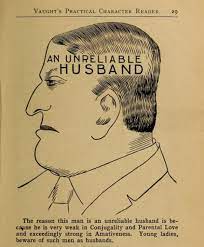My boss sobbing in the corner of the office "Please. We can't afford to pay you any more, we can't keep the doors open"
Takes a bite out of my 8th lead pipe "MY NEW WAGE IS NOW $1,170/HOUR. I GOT DOZENS MORE OF THESE WHERE THIS ONE CAME FROM, BITCH"
From Richard Big Dick Wolff:
Then everything changed. Real wages stopped rising, as US capitalists redirected their investments to produce and employ abroad, while replacing millions of workers in the US with computers. The US women's liberation moved millions of US adult women to seek paid employment. US capitalism no longer faced a shortage of labour.
Wolff also points to that. In the span of a decade the world's labor market effectively increased by 1/3 with that third having one of the cheapest costs of living in the world. There's no way that can't have a depressive effect on wage growth.
Could be, but the actual inflection point shown in the original graph (and still present in the gray text in the meme above) is 1973.
Plus the ongoing war on unions, the fall of the soviet union, nafta and whatnot...
I don't think there's a single cause. But Ronald Reagan has to be seen as playing an outsize role in many graphs like this one. He was first elected in 1981. (And Thatcher became PM in 1979.)
went to look up the history of its use and found this
What follows is a brief chronological history of the use of lead-based paint in the United States:
- Use of white lead began in the Colonial times and ultimately peaked in 1922.
- In 1951, Baltimore banned the use of lead pigment in interior paint in Baltimore housing – the first such restriction in the country.
- In 1955, the industry, working with public health officials and organizations, adopted a voluntary national standard to prohibit, in effect, the use of lead pigments in interior residential paints.
- Through the 1950s and 1960s, the use of exterior lead-based paint declined significantly, and ended by the early 1970s.
- In 1971, the federal Lead Poisoning Prevention Act was passed.
- In 1978, the federal government banned consumer uses of lead paint.
The Dollop podcast about Thomas Midgley:
https://allthingscomedy.com/podcasts/393---thomas-midgley
The Harrison Brown thing raises an interesting question, I think. If he were doing that today, we would almost certainly criticize him for being part of the military industrial complex nonetheless.
Fun Fact: The USSR was the first nation to ban leaded gasoline :stalin-approval:
Our podcast episode about leaded gasoline: https://rss.com/podcasts/carsandcomrades/352764/
I better get started on drinking my lead paint then if I ever want my salary to match my output!








